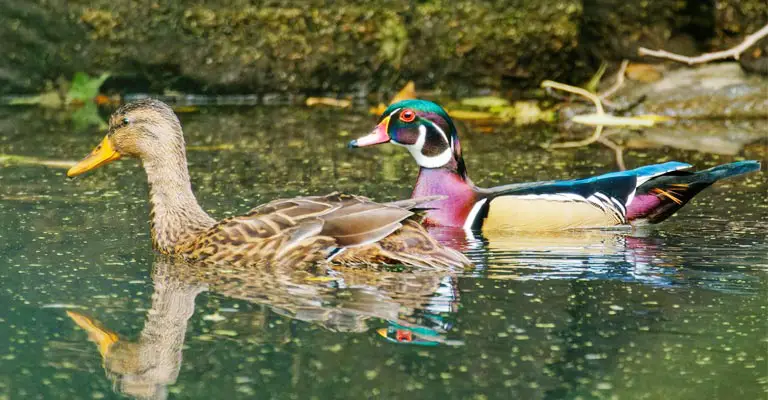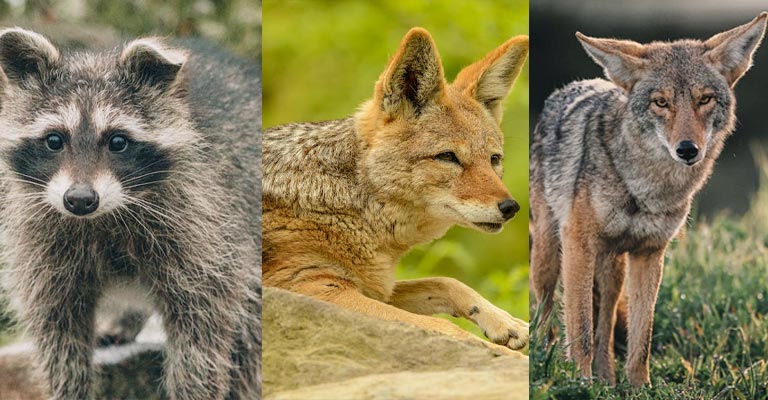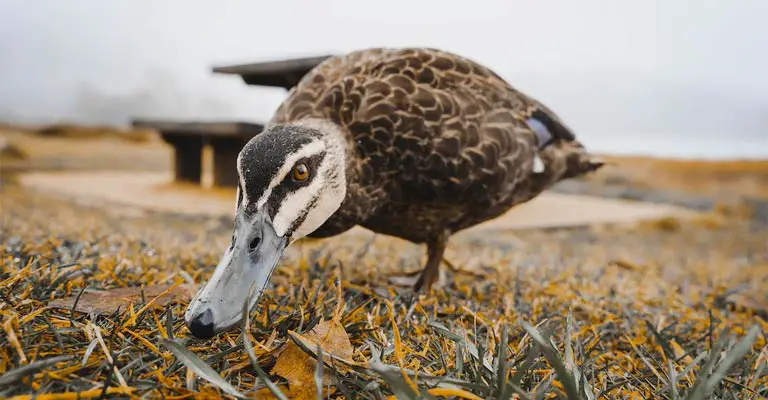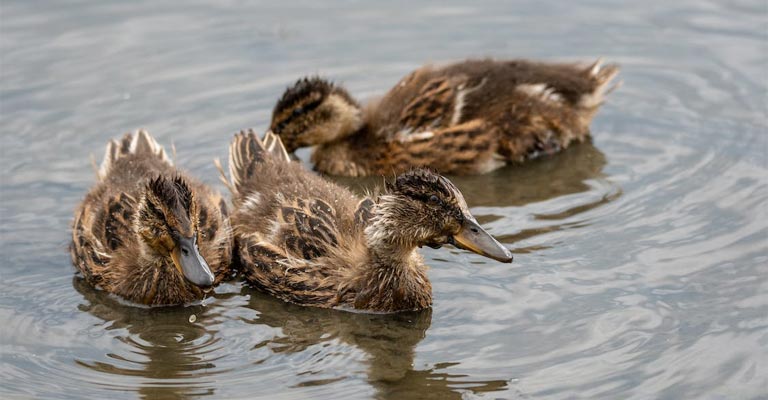Ensuring the safety of your ducks in the face of natural predators is a paramount concern for those who raise these waterfowl. Ducks are not only beloved pets and farm animals, but they also play a vital role in various ecosystems.
However, they are vulnerable to a range of predators, including raccoons, foxes, birds of prey, and more. Understanding how to keep ducks safe from predators is an essential aspect of responsible duck ownership.
In this guide, we will explore proven strategies and protective measures that can be employed to safeguard your ducks from potential threats.
From secure enclosures and electric fencing to guard animals and nighttime precautions, we will delve into the practical steps that can make a significant difference in ensuring the well-being of your ducks.

How To Keep Ducks Safe From Predators?
Keeping ducks safe from predators is essential to ensure their well-being. Ducks can fall prey to a variety of animals, including raccoons, foxes, birds of prey, and even domestic dogs. Here are the ways to protect your ducks:
Secure Enclosure
Ducks should have a secure enclosure, such as a duck house or coop, where they can roost at night. Make sure it has strong, predator-resistant walls, a solid floor, and a locking door. Ensure there are no gaps or weak spots that predators can exploit.
Electric Fencing
Electric fencing can be highly effective in deterring predators. Install it around the perimeter of your duck enclosure, both above and below ground. The electric shock will discourage predators from attempting to breach it.
Motion-Activated Lights
Install motion-activated lights around the duck enclosure to startle and deter nocturnal predators. The sudden illumination can make them think twice about approaching.
Guard Animals
Some animals, like dogs or geese, can serve as guardian animals for your ducks. These protectors can deter potential threats and alert you to any danger.
Locking Water Access
Ducks need access to water, but you can lock their water source at night to prevent them from venturing out. This reduces the risk of predators lurking around their water area.
Predator-Proof Fencing
Use sturdy, predator-proof fencing around the duck’s free-range area. This fencing should have small mesh openings and be dug into the ground to prevent digging predators from gaining access.
Keep Feed Secure
Store duck feeds securely to avoid attracting predators. Use sealed containers, and don’t leave any food out overnight, as it can lure raccoons, opossums, and other hungry animals.
Regular Inspections
Conduct regular inspections of the duck enclosure for signs of wear, tear, or potential entry points. Fix any damage promptly to maintain its security.
Keep Ducks Locked Up at Night
Ducks are most vulnerable at night. Ensure they are securely locked inside their enclosure during the evening hours, as this is when many predators are active. This simple step can significantly reduce the risk of harm.
Implementing these safety measures will go a long way in protecting your ducks from a variety of predators, ensuring they lead a safe and happy life.
What Are Some Common Predators Of Ducks?

Ducks face a range of natural predators, and it’s essential for duck owners to be aware of these potential threats to protect their feathered friends. Here are some common predators of ducks:
Raccoons
Raccoons are clever and agile predators known for their dexterity. They can easily break into duck enclosures and pose a significant threat, especially at night. Raccoons are notorious for preying on duck eggs and young ducklings.
Foxes
Foxes are skilled hunters and opportunistic predators that can pose a threat to ducks. They often target ducks during the evening and early morning hours. Foxes may attempt to dig or climb to access duck enclosures.
Coyotes
Coyotes are highly adaptable predators found in many regions. They can be a menace to ducks, especially if they are left unprotected at night. Coyotes are known for their cunning and ability to dig under fencing.
Birds of Prey
Hawks and owls are aerial predators that primarily target ducklings and smaller ducks. Ducks are vulnerable when swimming or foraging in open water, making them susceptible to attacks from above.
Domestic Dogs
Unrestrained domestic dogs can be a significant threat to ducks. Even well-intentioned dogs can chase or harm ducks if not properly supervised. Owners of ducks should be cautious around dogs, especially those with a strong hunting instinct.
Weasels
Weasels are small, slender mammals known for their cunning and tenacity. They can squeeze through small openings in duck enclosures and are skilled at killing ducks by biting the back of their necks.
Snakes
Depending on the region, various snake species can pose a threat to ducks, especially when they are nesting. Some snakes are opportunistic egg thieves and can enter nesting boxes or hiding spots to consume duck eggs.
Understanding these common predators and taking appropriate precautions, such as securing enclosures and employing protective measures, is crucial for the safety and well-being of ducks.
Protecting ducks from these natural threats is an essential part of responsible duck ownership.
How Do Predators Have Access To Duck Coops?

Predators can gain access to duck coops and enclosures through various means, often exploiting vulnerabilities in the structure or taking advantage of specific entry points. Here are some ways predators can access duck coops:
Unsecured Doors and Latches
If the doors to a duck coop are not properly secured with sturdy latches or locks, predators like raccoons and foxes can easily manipulate them to gain entry. Regularly check and maintain door hardware to prevent unwanted access.
Gaps and Weak Points
Gaps in the walls, ceilings, or floors of a duck coop can provide opportunities for predators to enter. These gaps may result from wear and tear, weathering, or poor construction. Ensure that the coop is free of any openings that predators could exploit.
Inadequate Fencing
If the perimeter fencing around the duck coop is not predator-proof, animals like coyotes, dogs, and weasels can dig under, jump over, or squeeze through to reach the ducks.
Using secure, tightly woven fencing that extends below the ground can help prevent this.
Windows and Ventilation
Windows and ventilation openings are necessary for airflow but can also serve as entry points for predators. Ensure windows and vents are covered with strong, predator-resistant mesh to keep animals like owls or raccoons out.
Inadequate Roofing
Ducks may be vulnerable to aerial predators, such as hawks and owls if the coop lacks proper roofing or netting. Make sure the roof is secure and that any netting used is in good condition.
Proximity to Vegetation
If the coop is too close to overhanging trees, shrubs, or other structures, predators can use these as launch points to access the coop. Trim or remove vegetation that might aid predators in their attempts to breach the coop.
Unsecured Food and Water
Leaving food and water outside the coop, especially at night, can attract predators. These predators may then attempt to find a way into the coop. Securely lock up any food or water sources when ducks are not actively using them.
Preventing predators from accessing duck coops requires regular maintenance, vigilance, and a proactive approach to address potential vulnerabilities. A well-constructed and well-maintained coop is the first line of defense against these threats.
How To Tell That Your Ducks Were Attacked By Predators?

Identifying whether your ducks have been attacked by predators is crucial for their safety and well-being. Here are some observations that can help you determine if your ducks were attacked by predators:
Missing Ducks
The most obvious sign of a predator attack is missing ducks. If you notice that some of your ducks are unaccounted for, it’s a strong indication that something may have attacked them.
Feather Scatter
Look for scattered feathers around the coop or their free-range area. Feathers strewn across the ground can be a sign of a struggle or attack, as predators may have plucked feathers during the attack.
Signs of Struggle
Observe the area for signs of a struggle, such as disturbed bedding, overturned feeders or waterers, and any visible damage to the coop or fencing. These can indicate that a predator attempted to breach the duck’s enclosure.
Duck Injuries
Inspect the remaining ducks for injuries or wounds. Bites, scratches, or puncture wounds are signs that an attack occurred. Injured ducks may also exhibit signs of distress, such as limping or being in shock.
Egg Raiding
If you keep ducks for their eggs, check the nest boxes for signs of predation. Broken or missing eggs, as well as disturbances in the nesting area, may indicate a predator seeking eggs.
Tracks or Scat
Look for tracks or scat near the coop or duck area. The presence of footprints or droppings from potential predators like raccoons, foxes, or coyotes can be a clear clue.
Surveillance Cameras
If you have surveillance cameras installed around your duck area, review the footage for any unusual nighttime activity. It may reveal the presence of predators and their behavior.
Keep in mind that it’s essential to respond quickly to these observations to safeguard the remaining ducks and prevent future attacks.
Strengthen security measures, such as reinforcing fencing, using motion-activated lights, and ensuring the coop is well-locked at night to protect your ducks from future predator threats.
FAQs
How do I protect my ducks from aerial predators like hawks and owls?
To safeguard your ducks from aerial predators, it’s essential to provide adequate shelter. Cover your duck enclosure with secure roofing or netting. Ensure the mesh or netting is strong and tightly woven to prevent access.
What should I do if I suspect a predator has targeted my ducks?
If you suspect a predator attack, immediately check on your ducks for injuries and secure them in a safe location. Examine the area for signs of struggle, feathers, tracks, or scat.
Can guardian animals effectively protect my ducks from predators?
Yes, guardian animals like dogs or geese can be effective in deterring predators. These animals can alert you to potential threats and provide an added layer of protection for your ducks.
How can I keep my ducks safe at night when they are most vulnerable to predators?
To keep ducks safe at night, make sure they are securely locked in their coop. Ensure the coop is well-constructed with strong walls and a locking door. Use electric fencing to deter nocturnal threats, and install motion-activated lights around the coop to startle potential predators.
How can I prevent predators from digging under the duck enclosure?
To prevent digging predators, bury hardware cloth or strong wire mesh around the perimeter of the duck enclosure. Extend the mesh several inches into the ground to create a barrier.
Regularly inspect and maintain this ground barrier to ensure its integrity and effectiveness in deterring burrowing predators.
Conclusion
Protecting ducks from predators is not just a matter of safeguarding your investment; it is a commitment to the welfare of these charming and valuable birds.
The methods and strategies discussed in this guide, from securing enclosures to being vigilant for signs of predator activity, are your tools to create a safe environment for your ducks.
By implementing these protective measures, you are not only preventing harm to your ducks but also contributing to their overall health and happiness. The bond between the duck and the owner grows stronger when the ducks are safe and content.
Remember, with proper care and vigilance, you can provide a secure haven for your ducks, allowing them to thrive in a natural, predator-free environment.